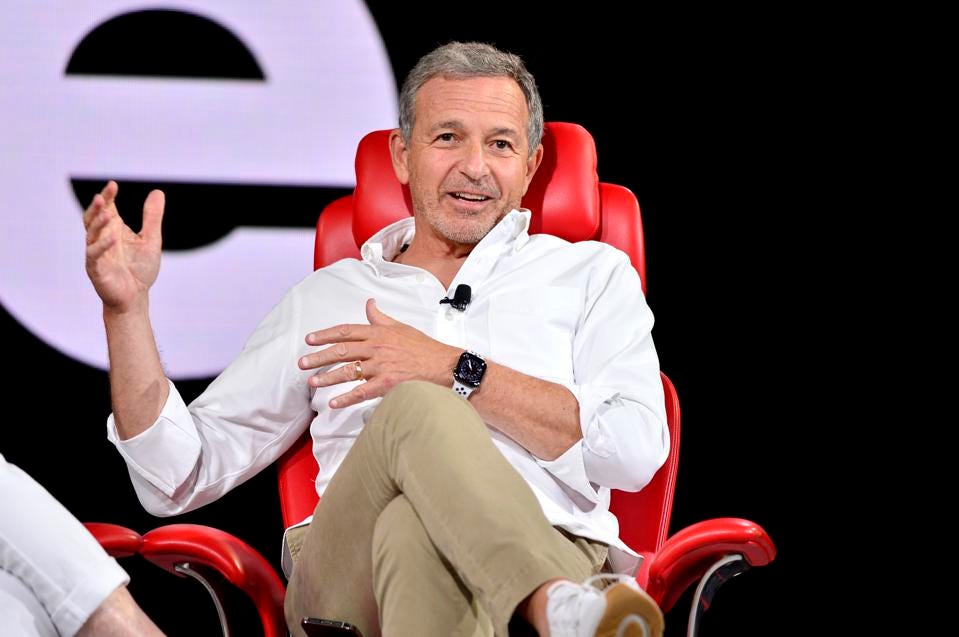Late last night, Disney reappointed Bob Iger as its chief executive, after ousting Bob Chapek. The latter held the position for less than three years. Earlier this month, data showed that Disney+ had lost nearly $1.5 billion in the three months to September’s end, which likely played a role in the decision to bring Iger back.
His return to prominence may indicate that Disney is taking its streaming ambitions seriously amid increasing competition from the likes of Amazon, Apple, and HBO Max. More than 235 million people have subscriptions to at least one of Disney’s three streaming platforms, which include the sports-focused ESPN+ and wider entertainment site Hulu. By way of comparison, Netflix has 227 million subscribers, according to the Financial Times.
Iger is tasked with growing Disney’s streaming services while also managing its traditional businesses—including theme parks, which were hit hard by the coronavirus pandemic as governments imposed travel restrictions. Walt Disney World has since reopened in Florida, though attendance is still far lower than before the crisis. But with Iger back at the helm, it appears the company is better equipped to tackle the ever-evolving entertainment landscape—and come out on top. It also provides a lesson for leaders on boomerang workers: when you have the right person for a job, it’s worth bringing them back.
Boomerang workers, also known as returners, are experienced personnel who have left their jobs for a period of time, often to raise a family or pursue other interests. They can bring valuable expertise and fresh perspectives to the workplace, making them attractive candidates when companies look to fill executive roles. Iger’s reappointment shows that Disney understands this and is willing to take a chance on the right person.
According to research published by MIT Sloan Management Review, companies with flexible working policies that encourage boomerang working access a larger talent pool. At the same time, employees benefit from the experience they have gained away from their original role.
Iger’s return will likely encourage other companies to consider giving experienced individuals a second chance—regardless of how long they’ve been away from the workplace. Consider the advantages a boomerang worker can bring to your business—here are four ways you can:
1. Have an open recruitment policy and consider returners alongside other candidates
Study potential returners carefully and assess their application similarly to new candidates. For example, consider how the applicant’s previous experience could benefit your team if you’re recruiting for a new role. You could even seek out candidates who have left the industry and explore how their skills could be transferred to a new position.
2. Look for ways to make it easier for returners to re-enter the workforce
Think about how you can improve onboarding processes and policies so that returning employees feel more welcome and included in their new environment. For example, provide training opportunities, mentor programs, and flexible hours. You could even consider creating roles specifically for returners.
3. Avoid making assumptions about the experiences of returning workers
Don’t assume a boomerang worker cannot catch up on new skills or technologies. Instead, focus on their overall experience and potential rather than any individual gaps in knowledge. For example, allow them to demonstrate their understanding of the industry practically, such as by giving a presentation or leading a project. You could even offer a trial period to evaluate their performance before making a formal offer.
4. Create a supportive environment that values and celebrates the experience of boomerang workers rather than disregarding it as irrelevant
Show your team that you recognize the unique skills of returners and demonstrate how their experience can be used to better the business. For example, encourage returners to share their knowledge and expertise in team meetings or focus groups. You could even consider creating a returning worker program.

By welcoming former employees back, companies can benefit from their increased loyalty and commitment. Boomerang workers tend to be more dedicated to the company than new hires since they are already familiar with the organization—allowing them to hit the ground running and contribute to productivity faster than someone coming in from an outside role. Furthermore, you can create a more diverse workplace with experienced professionals willing to share their expertise and contribute their skills in a meaningful way.
In conclusion, Bob Iger’s return to the CEO position at Disney shows that the company has faith in his abilities and acknowledges his value. It also demonstrates Disney’s commitment to staying competitive in an ever-changing landscape while providing an example of how companies should embrace boomerang workers and their expertise. Only time will tell if Iger’s reappointment is the right move for Disney, but it certainly looks like an interesting step forward for the company.